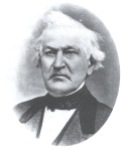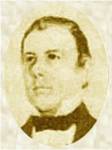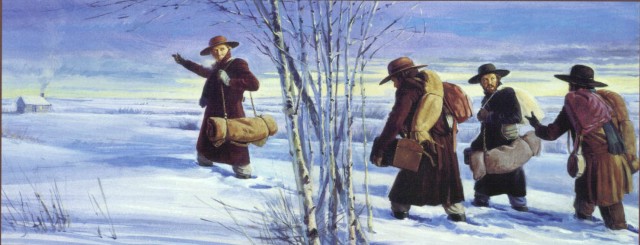Sections 30-36 primarily deal with missionary work in this dispensation. Several individuals are called to serve missions. I have the students divide into small groups, and then I give them a handout with someone I want them to read about. They are to read the short individual bio, then be prepared to share a short description of the life of the person they were assigned, share what the Lord told them in their particular section in the Doctrine and Covenants, and then explain how this story is relevant in the lives of teenagers. Most of my students did very well with this and we generated some quality discussion, especially in the area of real life relevance.
Section 30 – This section deals with David Whitmer (see verses 1-4) being chastened. For Joseph to give Brother Whitmer this counsel shows that he trusted God and not man, as Joseph and Emma were totally dependent upon David and Julia Whitmer for their lodgings when this revelation was received.
 It appears that, with the exception of the Book of Mormon, David struggled with everything that came by revelation through Joseph Smith after his initial experience with the Angel Moroni and the Book of Mormon. His loyalty to the revelations received through Hiram Page through his peepstone, in this instance, over that which had been revealed to the Prophet was but the foreshadowing of future difficulties he would have with revelations received by the Prophet. In future years we find him arguing that Joseph Smith originally taught that the Bible and the Book of Mormon contained “God’s law in its completeness.” He considered the Doctrine and Covenants unnecessary as its revelations were “purely personal.” He categorically denied the coming of John the Baptist to restore the Aaronic Priesthood and the coming of Peter, James, and John to restore the higher priesthood. (McConkie, Revelations of the Restoration, p. 245; see also Cook, David Whitmer Interviews, xviii-xx).
It appears that, with the exception of the Book of Mormon, David struggled with everything that came by revelation through Joseph Smith after his initial experience with the Angel Moroni and the Book of Mormon. His loyalty to the revelations received through Hiram Page through his peepstone, in this instance, over that which had been revealed to the Prophet was but the foreshadowing of future difficulties he would have with revelations received by the Prophet. In future years we find him arguing that Joseph Smith originally taught that the Bible and the Book of Mormon contained “God’s law in its completeness.” He considered the Doctrine and Covenants unnecessary as its revelations were “purely personal.” He categorically denied the coming of John the Baptist to restore the Aaronic Priesthood and the coming of Peter, James, and John to restore the higher priesthood. (McConkie, Revelations of the Restoration, p. 245; see also Cook, David Whitmer Interviews, xviii-xx).
This is totally relevant to the youth today. A student asked, “how many times do we accept the prophet and what he says, but then reject his counsel when it does not meet our expectations?” Sometimes we expect the Lord to be the master of the cafeteria, doling out doctrines to our liking and fully expecting that we can readily reject what is too difficult or misunderstood. While it is human nature to want to be cafeteria saints, at some point we need to mature so that we can grow to our full potential. That which we do not completely understand we can, provided we go about things the Lord’s way. A great scripture that teaches this idea is 1 Nephi 2:16 “having great desires to know the mysteries of God, I did cry unto the Lord; and he did visit me, and did soften my heart that I did believe all the words which had been spoken by my father…” Later Nephi will see the things his father saw. He went about the process the right way- notice that the Lord softened his heart, which tells us that Nephi was not exactly excited about what was coming from his father, he had to have his heart softened.
Another student in one of my classes made the observation that David accepted what he personally saw firsthand (the plates and the angel), but rejected that which he could not see for himself. We have already discussed the believing is seeing principle earlier in the schoolyear, so the kids readily identified with this principle.
Section 31 –This revelation announces how we as a people are to present our message to the world (see verse 4). The message of the Restoration centers on the idea that it is not common ground we seek in sharing the gospel. There is nothing common about our message. The way we answer questions about our faith ought to be by finding the quickest and most direct route to the Sacred Grove. That is our ground. It is sacred ground. It is where testimonies are born and the greatest truths of heaven are unveiled.
We claim no priesthood, keys, power, authority, or doctrines that do not trace themselves directly to heaven. We have not built upon the theological rubble of the past. All that we have, and this includes our faith in the Bible and our understanding of it, has come to us by direct revelation in this dispensation. Doctrines from any other source are without authority among the Latter-day Saints. All doctrine and authority must come through the channels the Lord has ordained for our dispensation, and that channel is the priesthood and keys restored to the Prophet Joseph Smith. (McConkie, Revelations of the Restoration, p. 247)
 While I do not believe that the story of the strippings regarding the wife of Thomas B. Marsh and Sister Harris reveals all the reasons for his leaving the Church, this story is relevant today and does at least give us part of the story as to what is happening in Thomas’ home. There are several places where teachers can locate this story. See for example, Small Acts Lead to Great Consequences, President Gordon B. Hinckley, Ensign, May 1984, p. 81 – http://lds.org/ldsorg/v/index.jsp?hideNav=1&locale=0&sourceId=fb4e05481ae6b010VgnVCM1000004d82620a____&vgnextoid=2354fccf2b7db010VgnVCM1000004d82620aRCRD
While I do not believe that the story of the strippings regarding the wife of Thomas B. Marsh and Sister Harris reveals all the reasons for his leaving the Church, this story is relevant today and does at least give us part of the story as to what is happening in Thomas’ home. There are several places where teachers can locate this story. See for example, Small Acts Lead to Great Consequences, President Gordon B. Hinckley, Ensign, May 1984, p. 81 – http://lds.org/ldsorg/v/index.jsp?hideNav=1&locale=0&sourceId=fb4e05481ae6b010VgnVCM1000004d82620a____&vgnextoid=2354fccf2b7db010VgnVCM1000004d82620aRCRD
 Section 32 – Parley P. Pratt, Ziba Peterson, Oliver Cowdery and Peter Whitmer are called to preach to the Lamanites. Principle: do the work His way, receive His help –see verse 3
Section 32 – Parley P. Pratt, Ziba Peterson, Oliver Cowdery and Peter Whitmer are called to preach to the Lamanites. Principle: do the work His way, receive His help –see verse 3
Section 33 – Ezra Thayre and Northrop Sweet are called on a mission. They are told to “open their mouths” – verse 9.
Section 34 – Orson Pratt is called on a mission. The doctrine of becoming children of God is outlined here as well as in section 35:2.
Section 35 – Sidney Rigdon is called to scribe for Joseph in his translation of the Bible. The JST translation will give us the scriptures as they are in “Christ’s bosom” –see verse 20. He is instructed to “fear not” –verse 27
Section 36 – Edward Partridge – every man is called to be a missionary in this section- see verses 6-7. Every elder is to serve a mission, this is something usually thought of as a modern day revelation. I like to show the youth that the Lord commanded this when the Church was just beginning.
Some basic truths/principles in these sections-
1. Who is to go and share the message of the Restoration? D&C 36:6-7 tells us that every man that embraces the gospel is to share this message. We are to preach the gospel. There is no way around this- if we do not share the gospel with God’s children, they will not hear it. It is that simple. This is WHO is to share the message.
2. What are we to share? D&C 31:4 addresses this question. We are to “declare the things which have been revealed to Joseph Smith.” We get our doctrine straight from heaven. we are teach the message of the Restoration. This is the WHAT of our message.
3. We are to do this His way. This is the HOW of our message. D&C 30:1-2 and 35:26-27 tell us that our message is a message of gladness. The message we bear should cause us to rejoice. The gospel has been restored! What a glorious message! Jesus lives and has ministered to men in our age of the world! Jesus identifies our tendency to fear and instructs us to “fear not”.
I had the students attempt to draw what they imagine Ezra Thayre would have looked like. Some of their art is submitted below.








